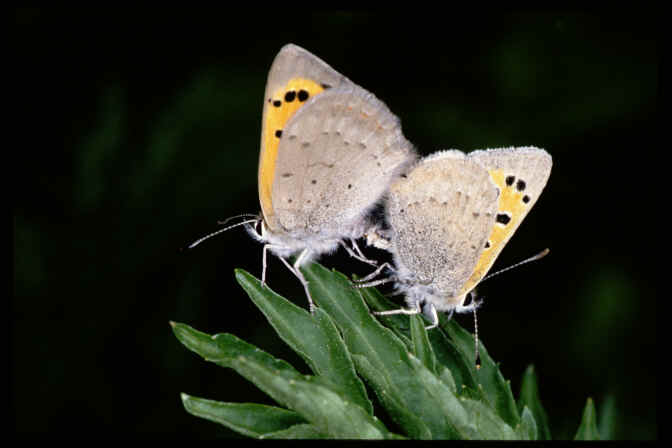
Communication |
|
| The communication between congeners is especially
important by finding a mate. Day flying species use their power of vision to locate a
suitable mate. Often you see butterflies together in a spiral flight. During this flight
butterflies detect if they are congeners and if the other is a suitable mate. This
detection can be done by sight or in combination with the use of species specific
pheromones. Butterflies primarily use sight to find mates. The male wings absorption spectrum is different in comparison with a female wing of the same species. People can not see these differences, but butterflies definitely do! |
| The use of vision will not work at night when most moths are active. Sound could be very effective but is never found in use by moths mating behavior. The only alternative is the use of scents, of which moths are masters. There are no differences in shape between the antennae of a male and female butterfly. The antennae of moths are quite variable, especially the antennae of male moths are often well developed. The antennae of male moths contain sense organs which can detect the species specific pheromones produced by a receptive female. |
|
The well developed "feathered" antennae of a male moth |